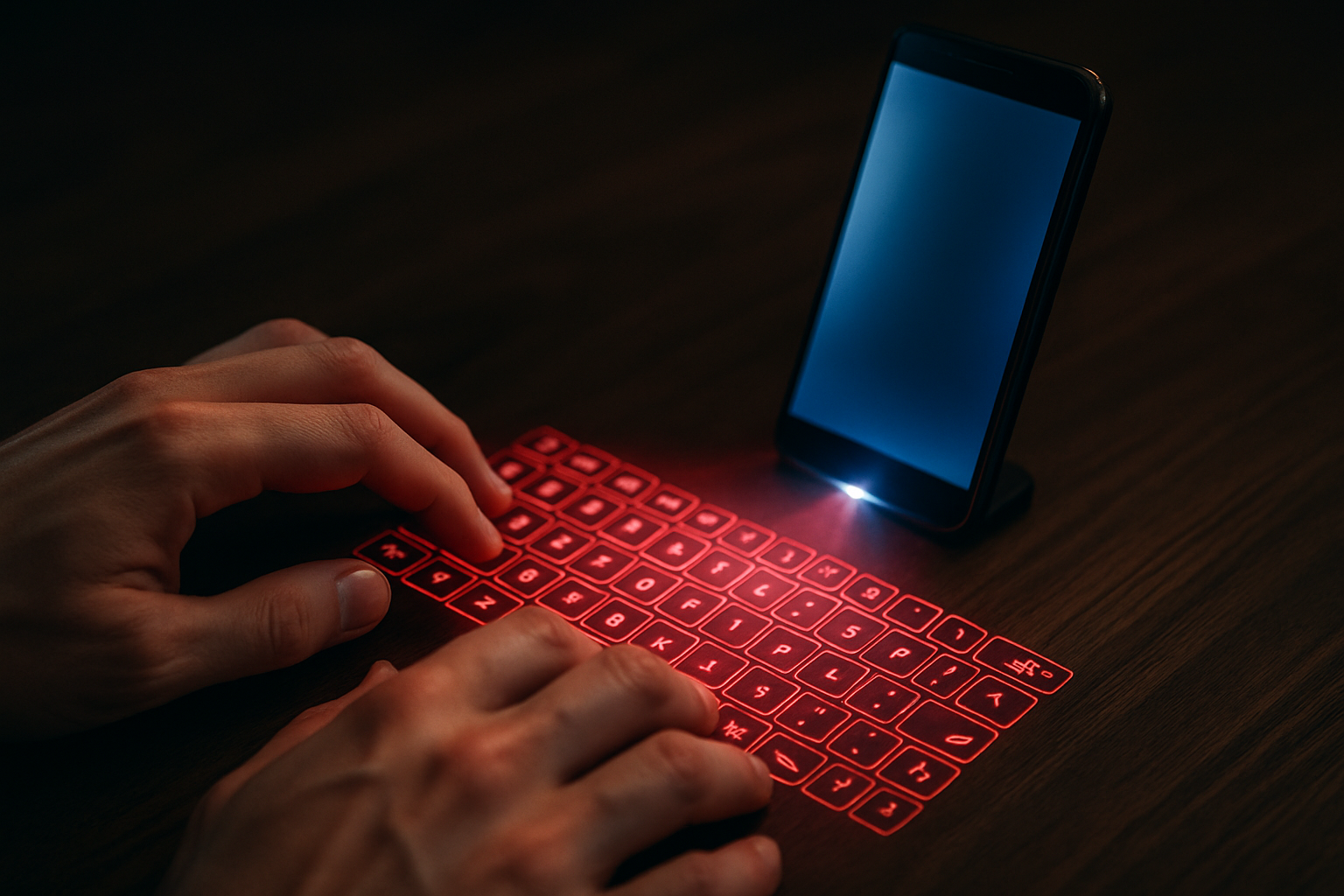Holographic Keyboards: The Next Frontier in Mobile Computing
In an era where our smartphones are becoming increasingly powerful, the limitations of their compact form factor are becoming more apparent. Enter holographic keyboards, a cutting-edge technology that promises to revolutionize how we interact with our mobile devices. This futuristic input method projects a virtual keyboard onto any flat surface, allowing users to type with the familiarity of a full-sized keyboard while maintaining the portability of a smartphone or tablet. As we delve into this emerging technology, we'll explore its potential to reshape mobile computing and the challenges it faces in widespread adoption.

These early attempts faced numerous hurdles, including poor accuracy, lag, and the need for specialized surfaces. Despite these challenges, the allure of a portable, full-sized keyboard that could disappear at will kept researchers and engineers pushing forward.
How Holographic Keyboards Work
At their core, holographic keyboards utilize a combination of laser projection and infrared sensing technology. A small projector emits a visible image of a keyboard onto a flat surface, while an infrared laser creates an invisible plane just above the projected image.
When a user’s fingers break this infrared plane, sensors detect the interruption and interpret it as a keystroke. Advanced algorithms then map these detected touches to specific keys, translating them into text input for the connected device.
Current State of the Technology
Today’s holographic keyboards have come a long way from their early prototypes. Companies like Celluon and Serafim have released consumer-ready products that offer improved accuracy and responsiveness. These devices typically connect to smartphones and tablets via Bluetooth, providing a typing experience that aims to rival traditional physical keyboards.
While still not as precise as their physical counterparts, modern holographic keyboards boast features like multi-touch support, customizable layouts, and even gesture controls. Some models can project onto any flat surface, while others come with a specialized mat for optimal performance.
Advantages and Potential Applications
The most obvious benefit of holographic keyboards is their portability. When not in use, they take up virtually no space, making them ideal for travelers and mobile professionals. This technology could potentially eliminate the need for separate keyboard accessories, streamlining mobile setups.
Beyond traditional computing, holographic keyboards have exciting applications in various fields. In healthcare, they could provide a sterile input method in environments where physical keyboards pose contamination risks. For augmented reality (AR) systems, they offer a natural way to interact with virtual interfaces without the need for bulky hardware.
Challenges and Limitations
Despite their potential, holographic keyboards face several hurdles on the path to widespread adoption. Accuracy remains a primary concern, as the lack of tactile feedback can lead to more typing errors compared to physical keyboards. Environmental factors like lighting conditions and surface textures can also affect performance.
Battery life is another challenge, as the constant projection and sensing require significant power. Current models typically offer only a few hours of use on a single charge, which may not be sufficient for all-day productivity.
The Role of Haptic Feedback
To address the lack of tactile feedback, some researchers are exploring the integration of haptic technology with holographic keyboards. By using focused ultrasound waves or air jets, these systems aim to provide a sense of touch to users’ fingertips as they type on the virtual keyboard.
While still in early stages, this haptic feedback could significantly improve the typing experience and accuracy of holographic keyboards, potentially bringing them closer to the feel of traditional keyboards.
Market Impact and Future Outlook
The global market for holographic keyboards is still relatively small, with estimates placing it around $20-30 million as of 2021. However, industry analysts project significant growth in the coming years, with some forecasts suggesting the market could reach $100 million by 2025.
As the technology matures and costs decrease, we may see holographic keyboards integrated directly into smartphones and tablets, eliminating the need for separate devices. This integration could potentially reshape the mobile device market, influencing design choices and user expectations.
A Glimpse into the Future of Input
Holographic keyboards represent a fascinating convergence of projection technology, motion sensing, and mobile computing. While they may not replace traditional keyboards entirely, they offer a glimpse into a future where our interactions with digital devices become increasingly seamless and adaptable.
As research continues and the technology evolves, we can expect to see holographic keyboards become more accurate, energy-efficient, and versatile. Whether they’ll become a staple of mobile computing or remain a niche technology remains to be seen, but their potential to transform how we interact with our devices is undeniable. As we move forward, holographic keyboards serve as a reminder of the endless possibilities that emerge when imagination meets technological innovation.





